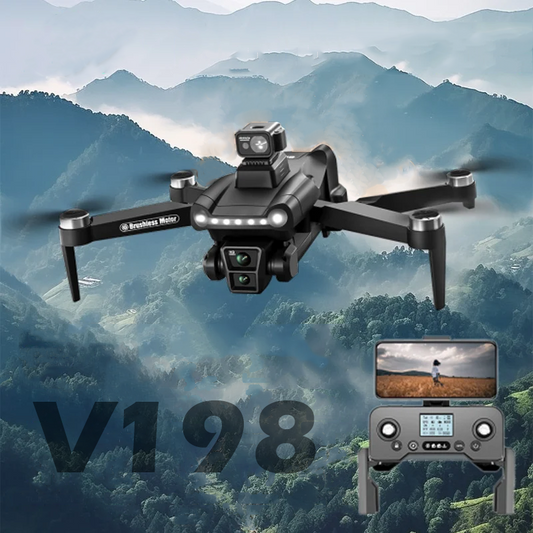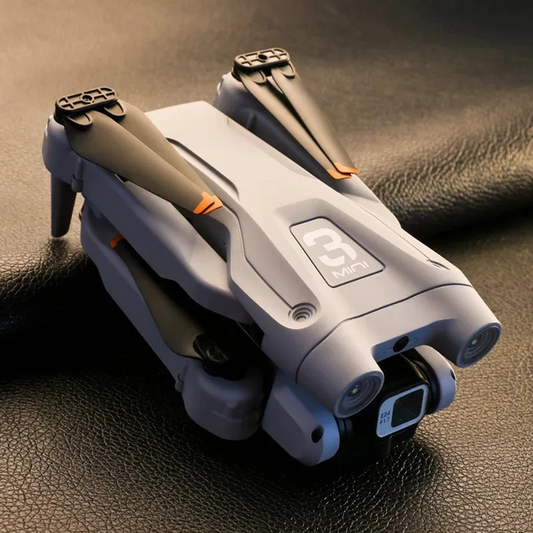How Drones are Helping in Earthquake Damage Assessment

In recent years, drones have emerged as indispensable tools in various fields, from filmmaking to agriculture. However, one of the most crucial applications of drone technology lies in disaster management, particularly in the aftermath of natural calamities like earthquakes. In this article, we'll delve into how drones are playing a pivotal role in earthquake damage assessment, aiding rescue and recovery efforts with unprecedented efficiency and precision.
Understanding Earthquake Damage Assessment:

Earthquakes, with their unpredictable nature and devastating impact, pose significant challenges for emergency responders and relief organizations. One of the immediate tasks following an earthquake is assessing the extent of damage to infrastructure, buildings, and critical facilities. Traditionally, this process involved manual inspection, which was not only time-consuming but also risky, especially in unstable or hazardous environments.
Enter Drones: The Game Changer:

Drones, equipped with advanced imaging technology and maneuverability, have transformed the landscape of disaster response, including earthquake damage assessment. These unmanned aerial vehicles (UAVs) offer several advantages over conventional methods, making them invaluable assets in crisis situations.
a. Rapid Deployment:
Unlike ground teams, drones can be deployed swiftly to survey affected areas, providing real-time insights into the extent and severity of damage. This rapid response is crucial for prioritizing rescue efforts and allocating resources effectively.
b. Aerial Perspective:
Drones offer a bird's-eye view of disaster zones, capturing high-resolution images and videos from various angles. This aerial perspective enables responders to identify structural damage, assess debris patterns, and map affected areas with unprecedented detail, aiding in decision-making and resource allocation.
c. Enhanced Safety:
By eliminating the need for manual inspections in hazardous environments, drones enhance the safety of emergency responders and personnel involved in damage assessment. They can access hard-to-reach or dangerous locations, such as collapsed buildings or unstable terrain, without putting human lives at risk.
d. Data Collection and Analysis:
Modern drones are equipped with advanced sensors, including high-definition cameras, thermal imaging, LiDAR, and multispectral imaging systems. These sensors collect vast amounts of data, which can be processed using sophisticated software to generate detailed maps, 3D models, and damage assessments. This data-driven approach provides valuable insights into the structural integrity of buildings, infrastructure, and critical facilities.
e. Cost-Effectiveness:
Compared to traditional methods involving helicopters or manned aircraft, drone-based damage assessment is significantly more cost-effective. Drones require minimal operational expenses and can cover large areas in a fraction of the time, making them an economical choice for disaster response agencies and organizations with limited resources.
Case Studies: Drones in Action
To illustrate the practical applications of drone technology in earthquake damage assessment, let's examine a few real-world examples:
1.Nepal Earthquake (2015):

Following the devastating earthquake that struck Nepal in 2015, drones played a crucial role in assessing damage, locating survivors, and facilitating rescue operations. UAVs equipped with thermal cameras helped identify heat signatures from trapped individuals beneath rubble, guiding rescue teams to save lives.
2.Mexico City Earthquake (2017):

In the aftermath of the earthquake that struck Mexico City in 2017, drones were deployed to survey damaged buildings and infrastructure, providing valuable data to aid in reconstruction efforts. These aerial assessments enabled authorities to prioritize rebuilding efforts and allocate resources efficiently.
3.Puerto Rico Earthquake (2020):

When a series of earthquakes struck Puerto Rico in 2020, drones were utilized to assess damage to homes, roads, and critical infrastructure across the island. By conducting aerial surveys, emergency responders gained insights into the impact of the earthquakes, enabling targeted relief efforts and support for affected communities.
Future Outlook and Conclusion:

As drone technology continues to evolve, its potential to revolutionize earthquake damage assessment and disaster response will only grow. From improved sensors to autonomous flight capabilities, ongoing advancements promise to enhance the effectiveness and efficiency of drone-based operations in crisis situations.
In conclusion, drones have emerged as invaluable assets in earthquake damage assessment, offering rapid deployment, aerial perspective, enhanced safety, data-driven analysis, and cost-effectiveness. By harnessing the power of UAVs, emergency responders and relief organizations can mitigate the impact of earthquakes, save lives, and expedite recovery efforts in affected communities. As we look to the future, the role of drones in disaster management will undoubtedly expand, ushering in a new era of resilience and preparedness in the face of natural disasters.
Explore a variety of drones at our online drone store.
Happy Flying!











